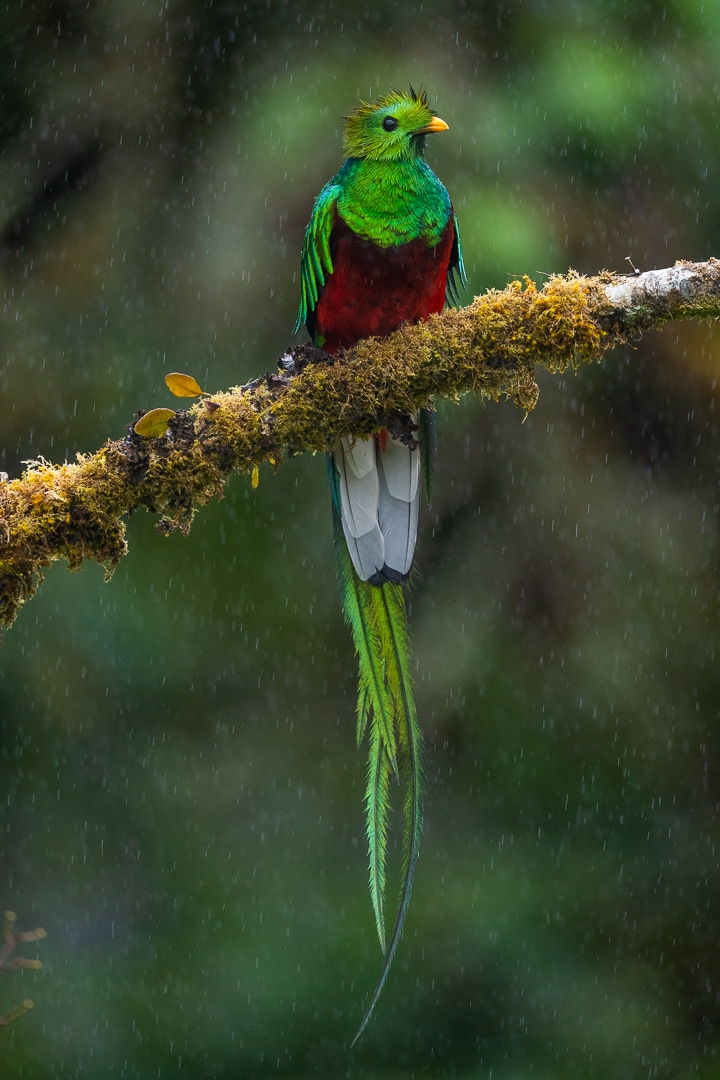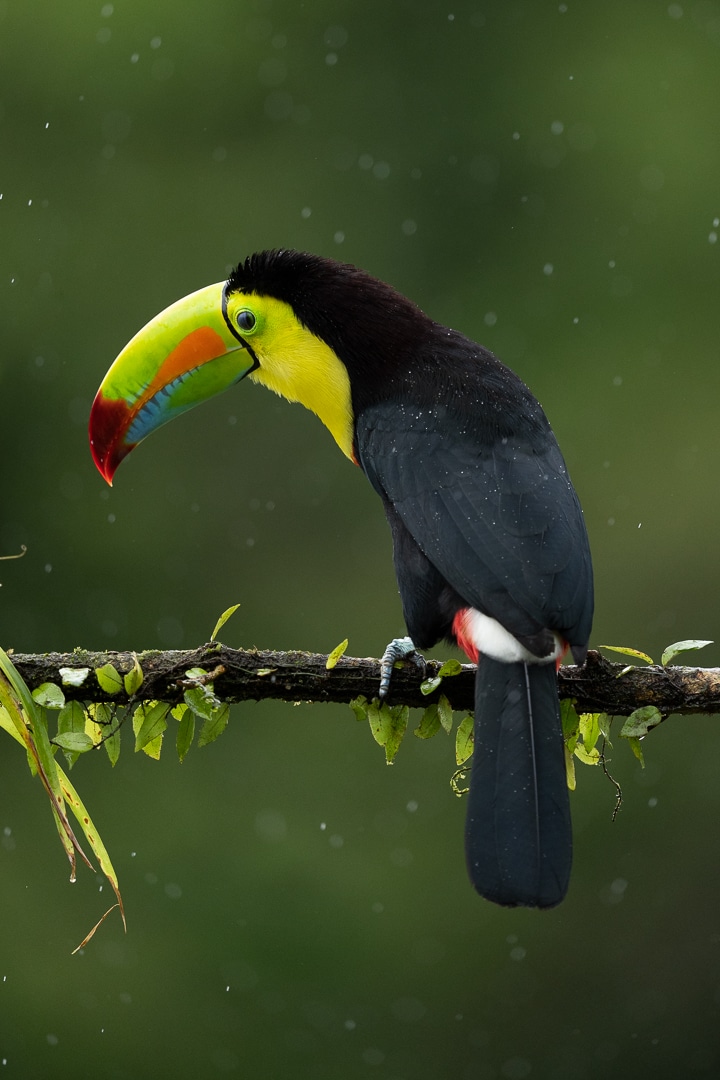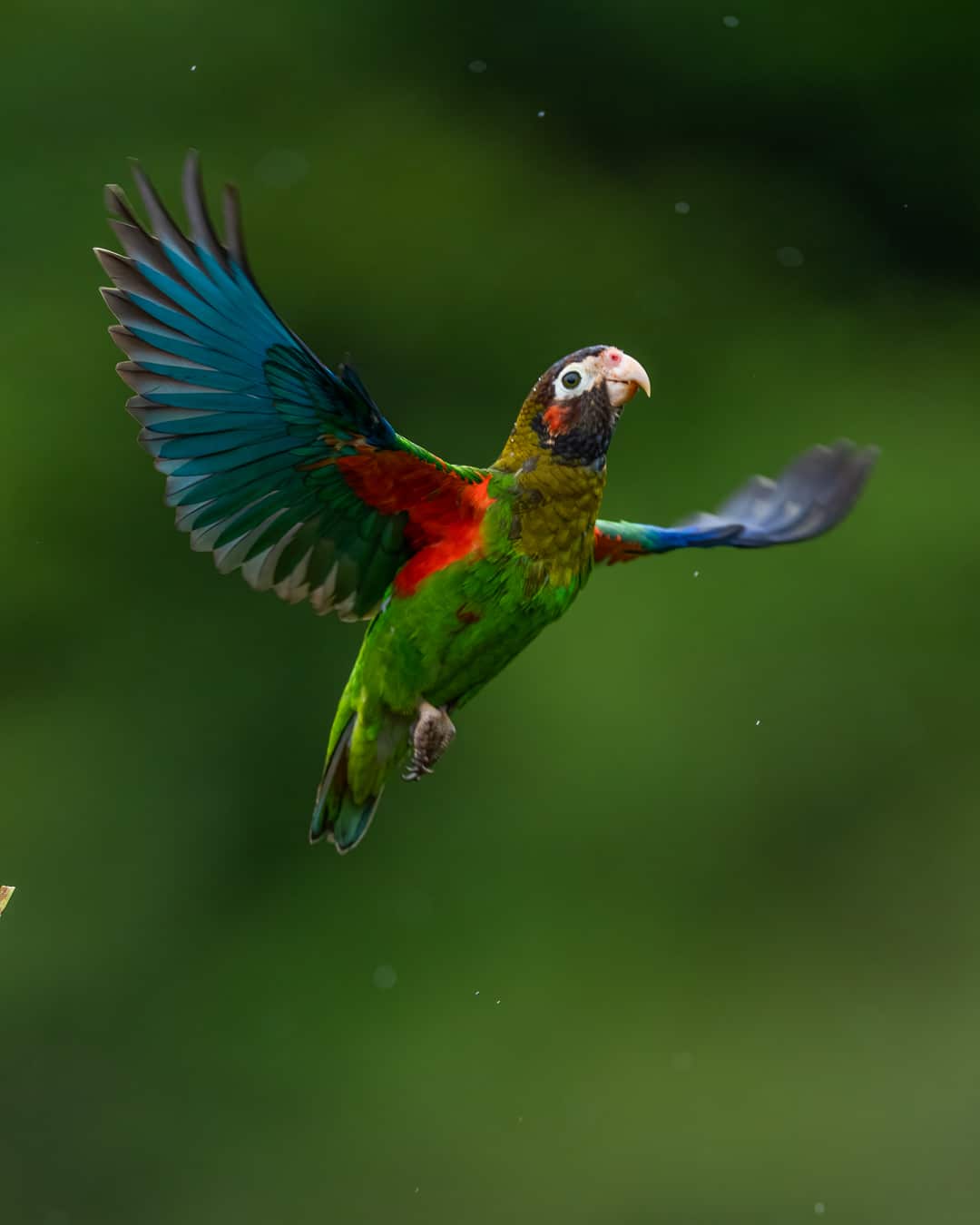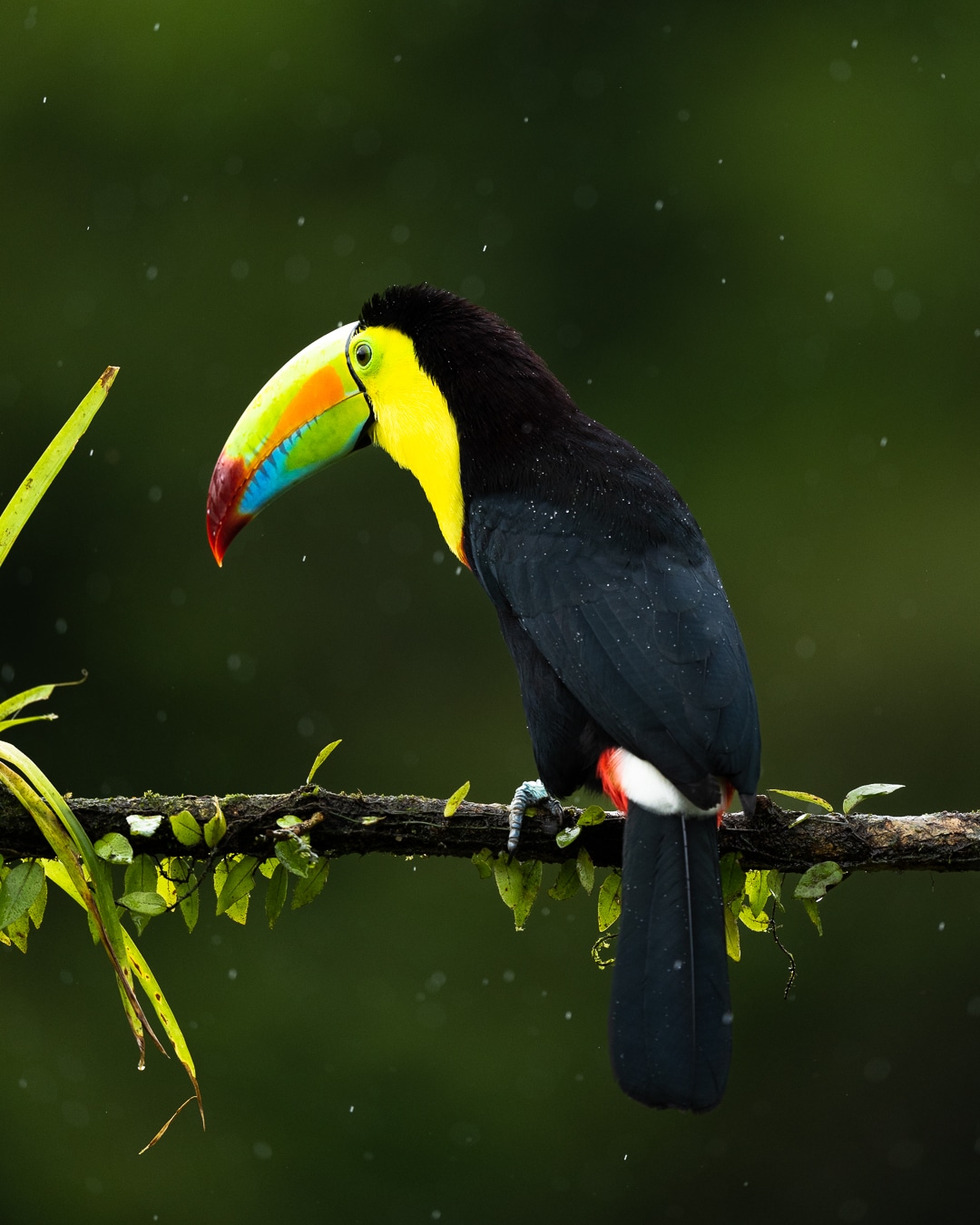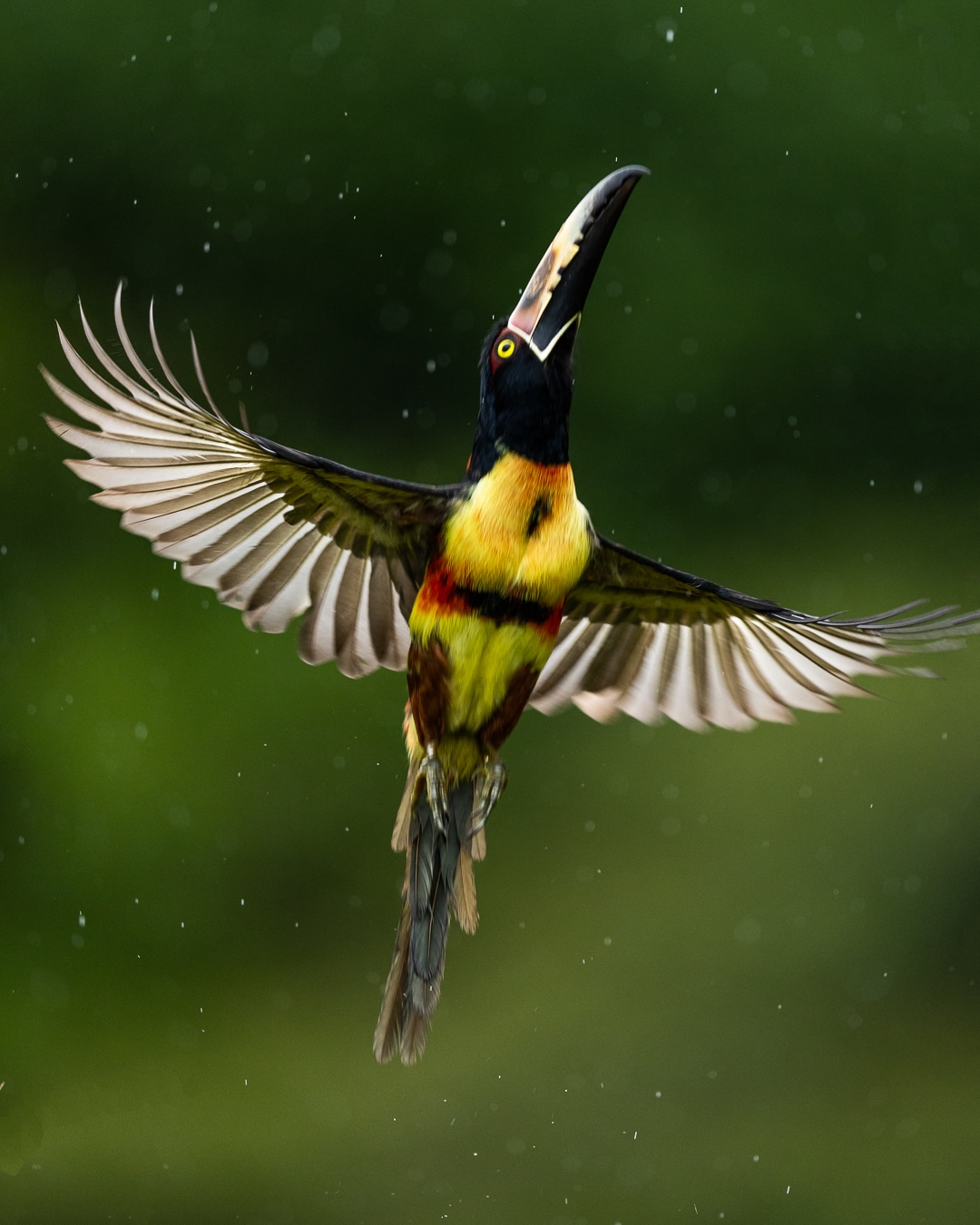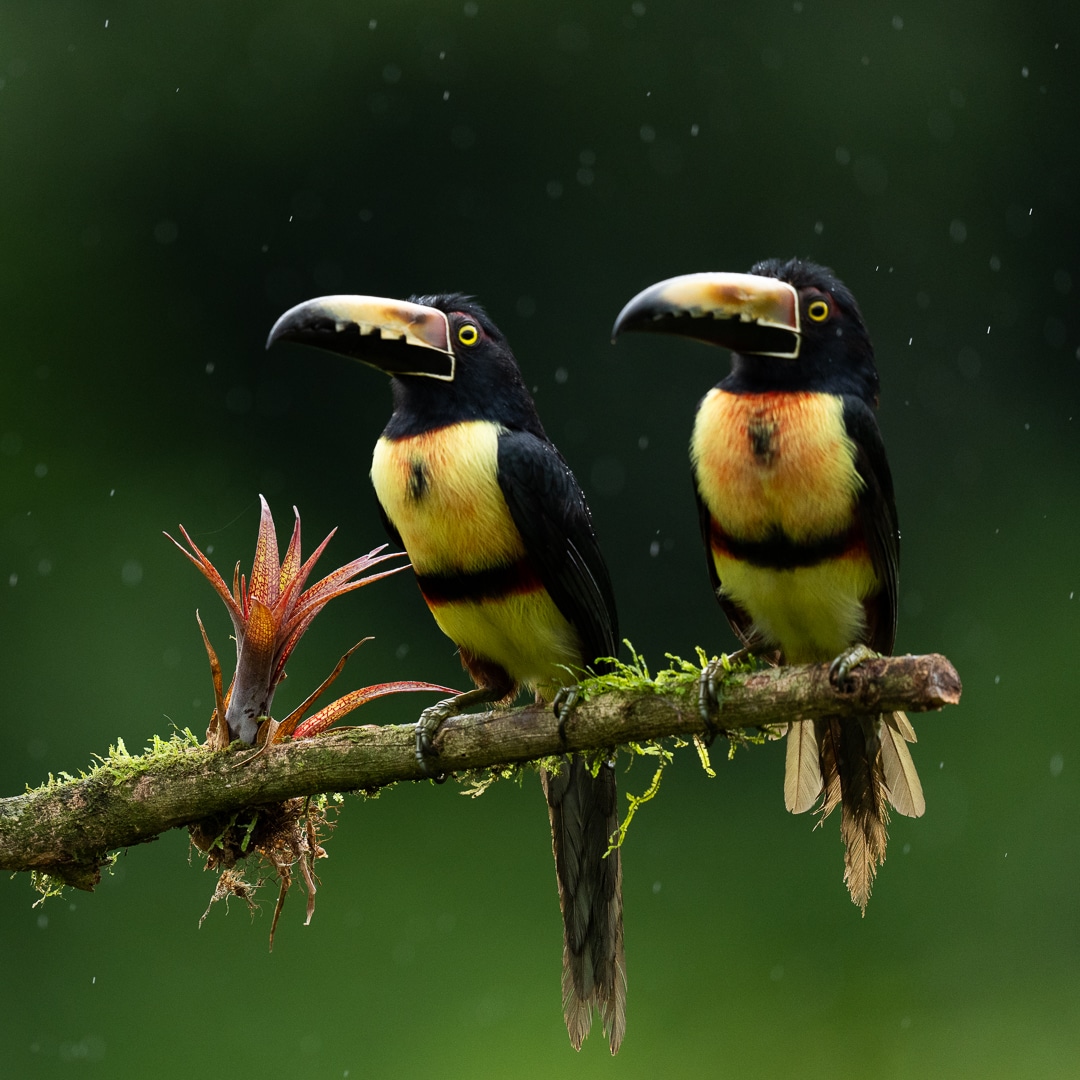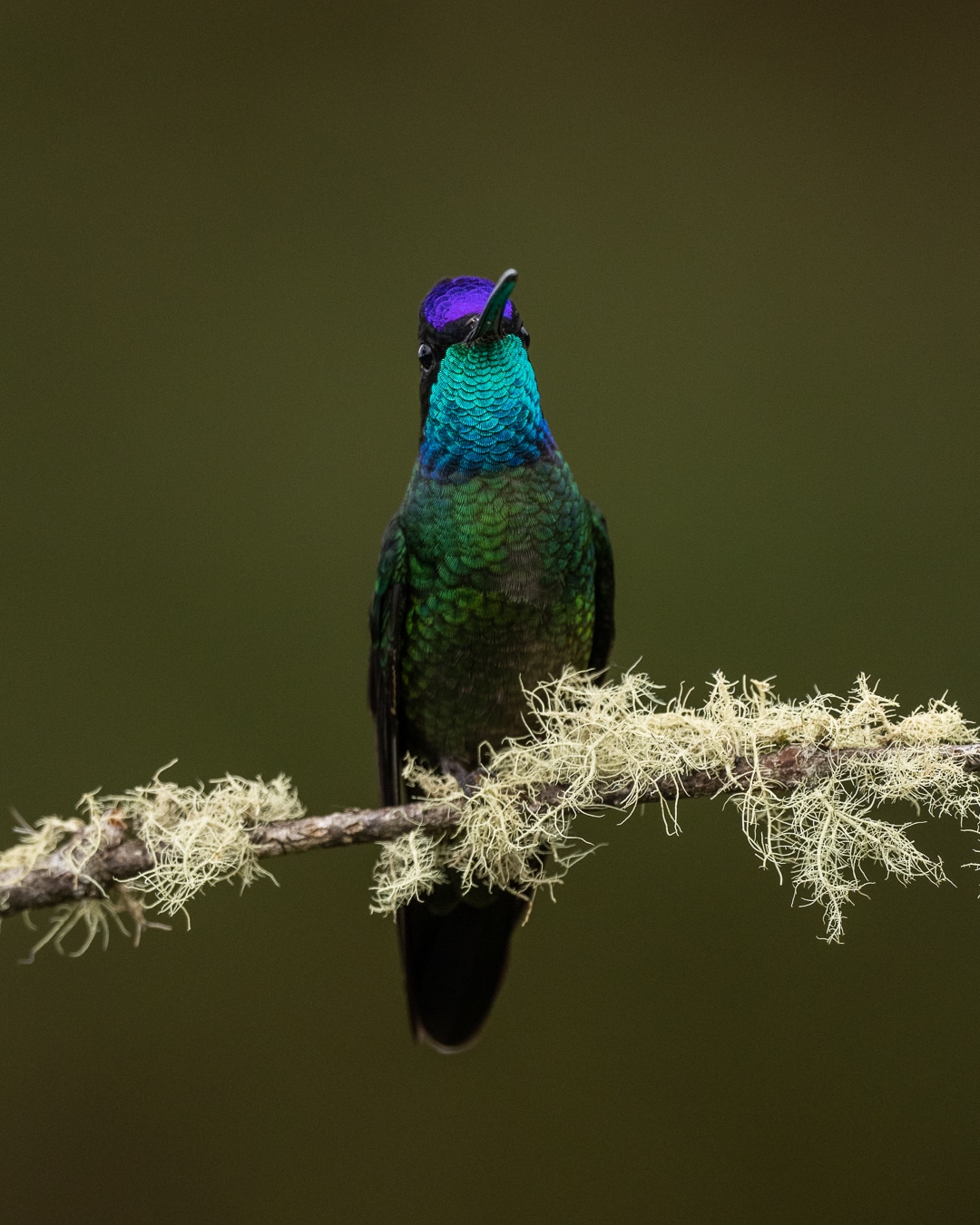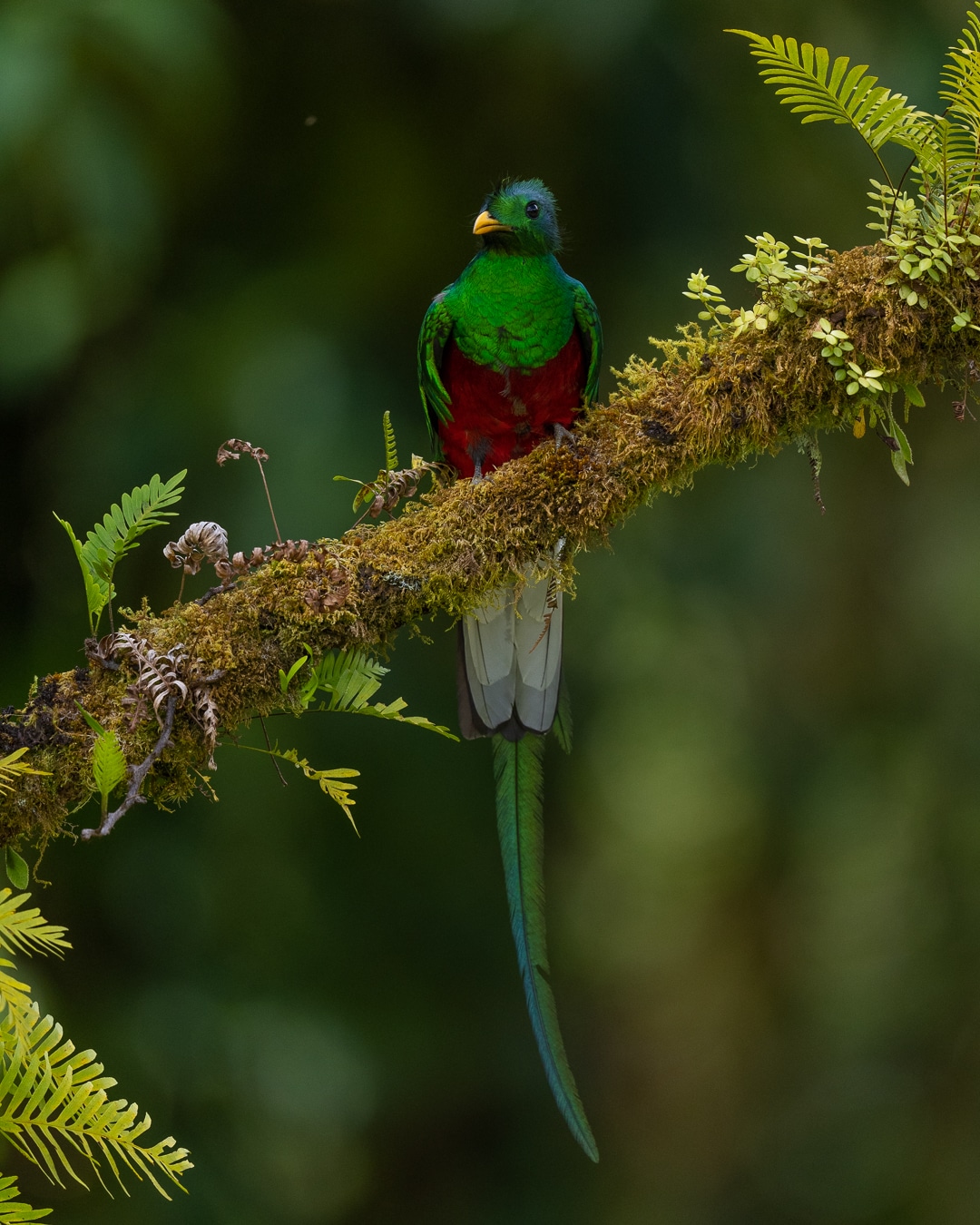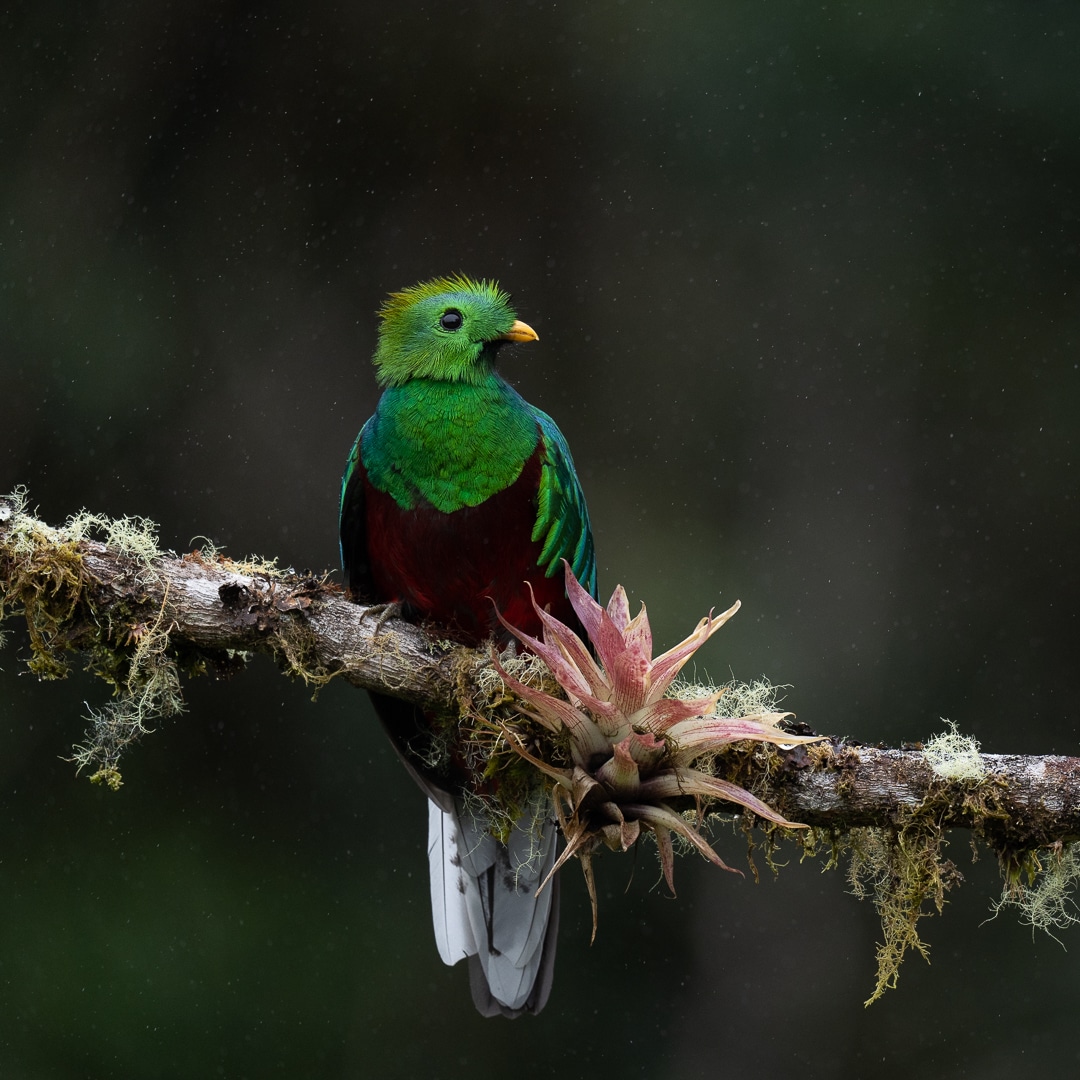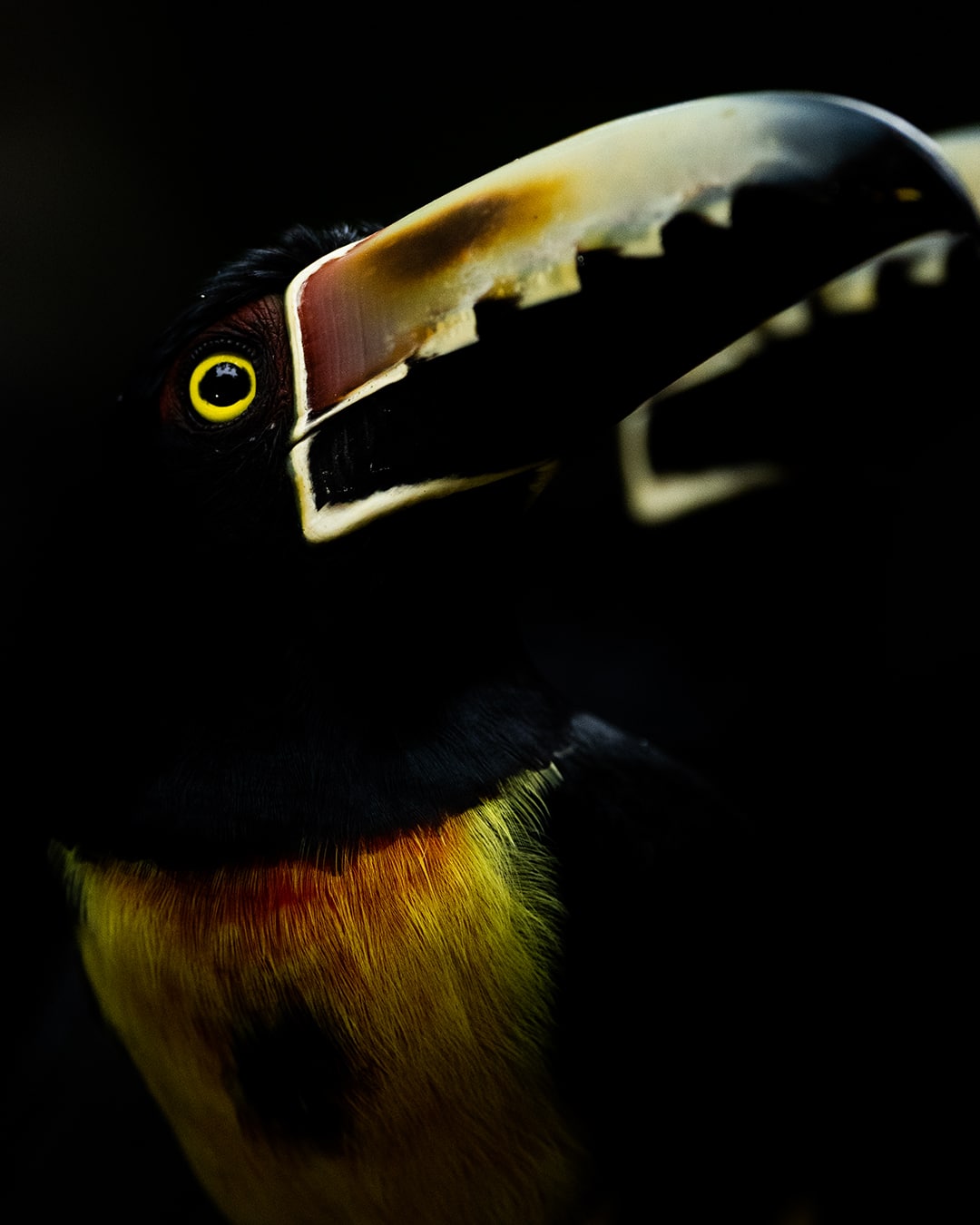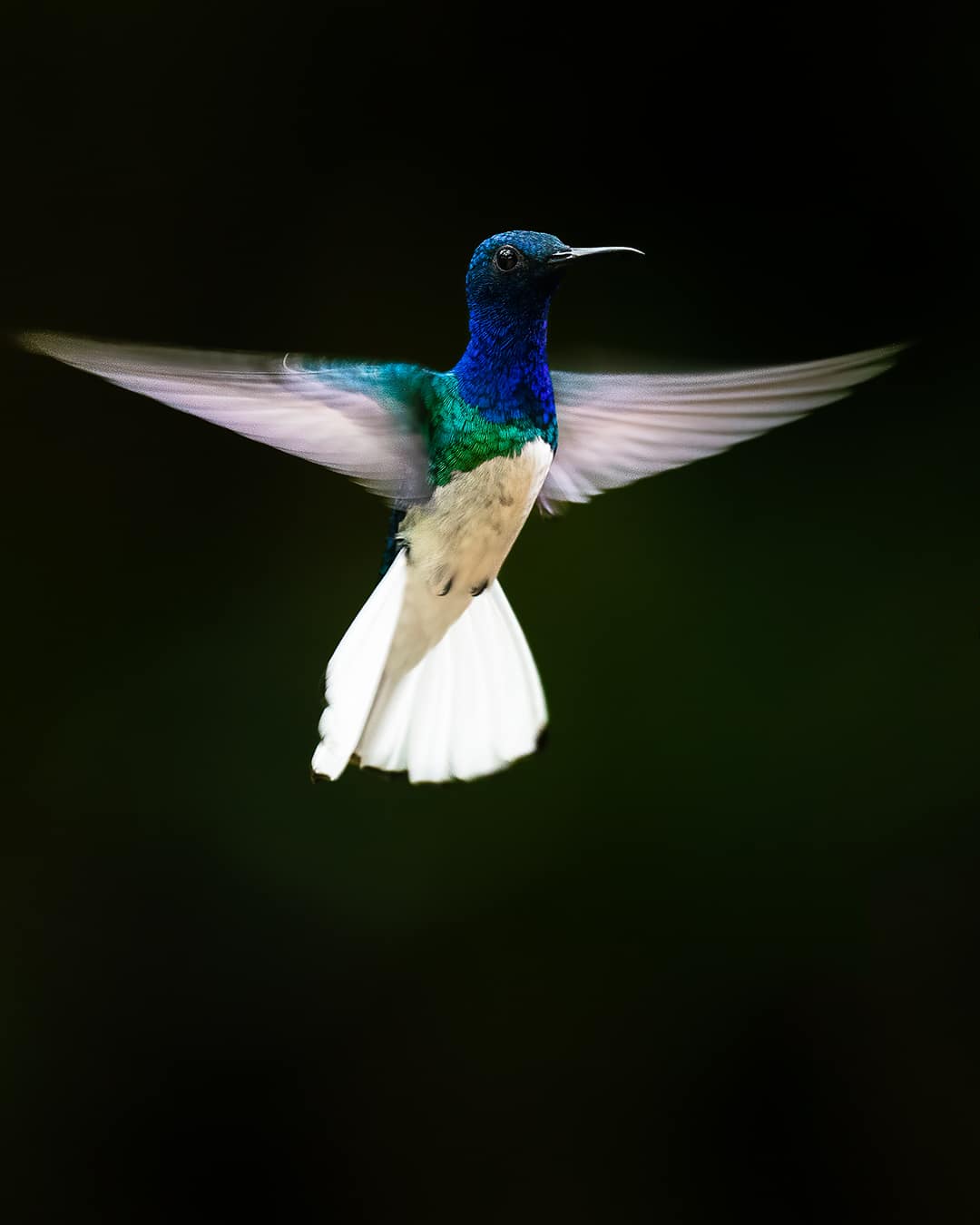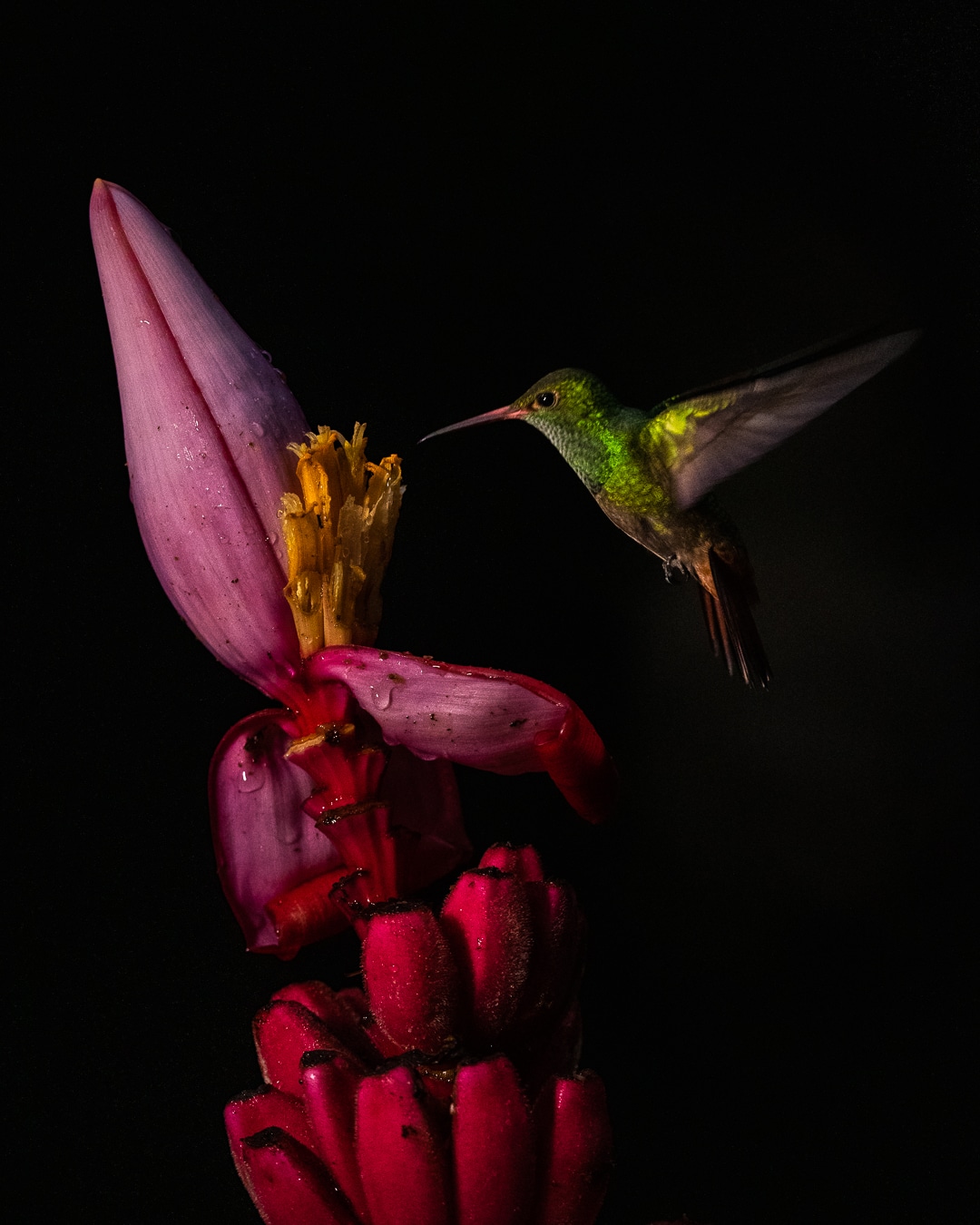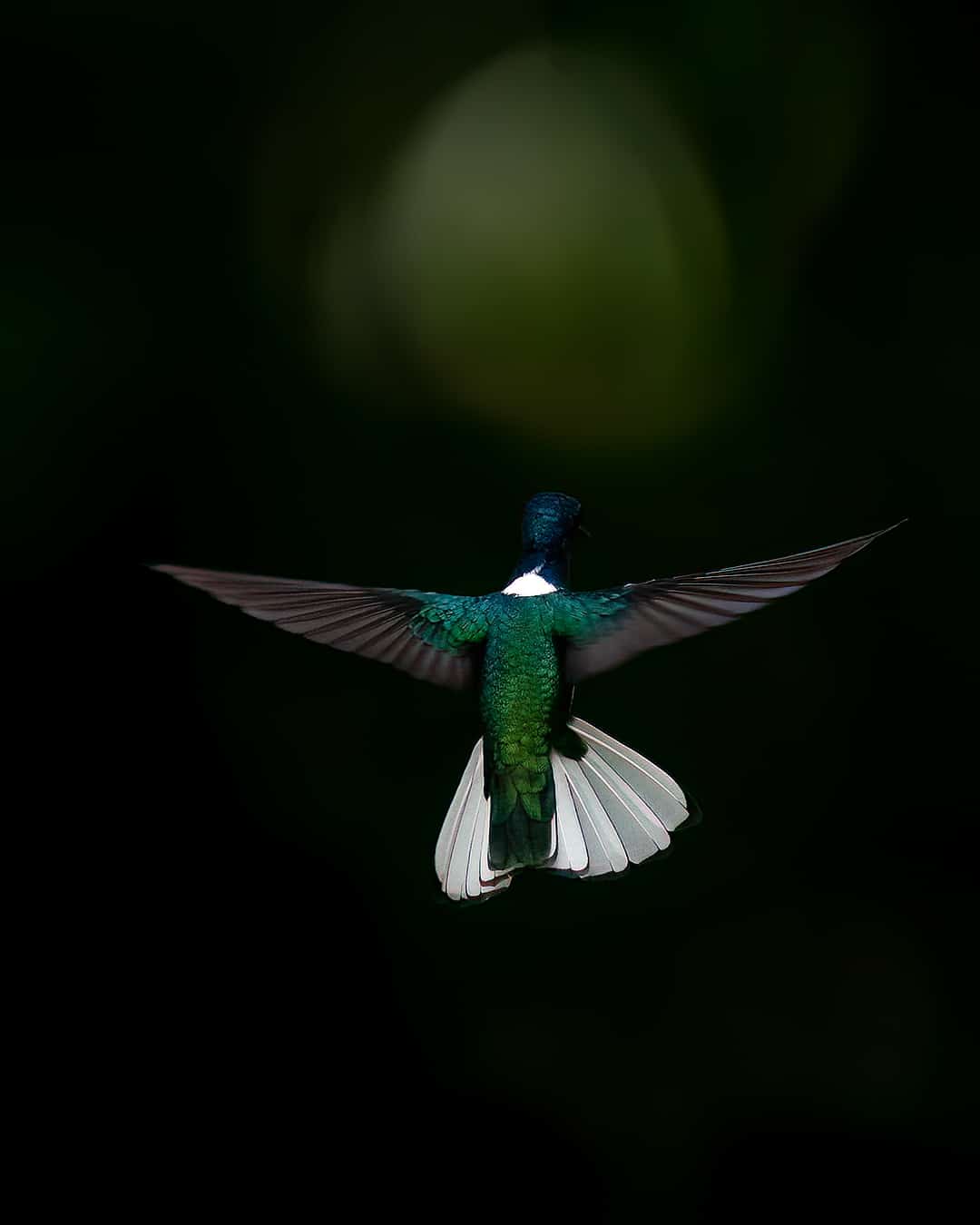Nov 25 – Arrival in SJO International Airport in Costa Rica
Upon arrival, you will be transferred to our hotel in San Jose in a private van. The drive from the airport to the hotel takes approximately 25 minutes depending on traffic.
Nov 26 – Drive to the Talamanca Highlands: Hummingbirds & Quetzal Tour
After an early breakfast, we will make our way up to the Talamanca Highlands. The drive to the highlands is approximately 2.5 hours long, as soon as we arrive we will be photographing hummingbirds in natural light. Some of the species of hummingbirds we will encounter on this day are Fiery-throated Hummingbird, Lesser Violetear, Talamanca Hummingbird, Volcano Hummingbird & White-throated Mountain-gem. After lunch, we will go in search of the most sought-after bird in Costa Rica, the Resplendent Quetzal. We will spend close to 3 hours looking for this enigmatic bird at some very reliable spots. After getting some pictures we will go back to our lodge where we will spend the following two nights.
Nov 27 – Quetzal Tour Am – Feeders – Quetzal Tour PM
We will have an early start today to go for our second chance of getting pictures of the Resplendent Quetzal. It will be a short drive to the Quetzal location and again, we will spend close to 3 hours at this site in hopes of getting excellent pictures. We will return to our hotel for a late breakfast. The rest of the morning will be spent in photographing from the deck and around the hotel grounds. In the afternoon we will have a third Quetzal Tour.
Nov 28 – Multiflash session and drive to our lodge in the Caribbean lowlands
We will spend most of the morning photographing hummingbirds with the multiflash technique. Then will check out from our lodge and start our drive towards the Caribbean lowlands. The drive takes approximately 5 hours.
Nov 29- Full Day Private Property Feeders
After breakfast, we will go on a 45-minute drive to a private property, where we will spend the full day photographing birds at feeders. Chestnut-headed Oropendola, Orange-chinned Parakeet, Golden-hooded Tanager, Red-legged & Green Honeycreepers are all possible today.
Additionally, there is an optional walk in the forest to look for Spectacled & Crested Owls, with luck some trogons and the cute Honduran White Bats.
At this location, we can also do a macro session of poison and glass frogs.
Nov 30 – Macaws in flight in the morning and Private Feeders in the afternoon
After breakfast, we will drive to a private property to photograph Scarlet and Great-green Macaws.
In the afternoon we will visit a different location where we will photograph birds at feeders. Crimson-collared, Scarlet-rumped & Dusky-faced Tanagers, Green-honeycreeper, Collared Aracari, and Black-cheeked Woodpecker are just a few of the birds that come to the feeders. Besides we will keep our eyes open as the activity in this yard is usually very good and it can produce birds like Lineated, Smoky and Golden Olive Woodpeckers, Slaty-tailed & Gartered Trogons, along with White- collared Manakin and many more!
Dec 1- Check out and drive to our lodge in the rain forest
After breakfast, we will do the check-out and depart to our next destination, the drive takes only about 2 hours. Once we arrive, we will be photographing from the deck. Yellow -throated & Keel-billed Toucans, Montezuma Oropendola, Brown-hooded Parrots, Red-legged, Green & Shining Honeycreepers, Black-cheeked Woodpeckers and with luck the very attractive Chestnut-colored Woodpecker are all possible on this day.
Dec 2 – Photography from the deck and King Vulture Hide
Before breakfast, we will photograph from the deck and by mid-morning we will go to a hide to photograph the extremely elusive King Vulture. The rest of the day we will take pictures from the deck at the lodge. More opportunities for Yellow- throated & Keel-billed Toucans, Montezuma Oropendola, Brown-hooded Parrot, Red-legged, Green & Shining Honeycreepers.
Dec 3 – Last photography session and departure to San Jose
We will have our last morning session at the lodge deck and leave before lunch to San Jose. We will make a stop at a local feeder where there are possibilities to photograph new species of birds. Red-headed & Prong- billed Barbets, Crimson Collared Tanager, Common Chlorospingus, Violet Sabrewing, the endemic Coppery-headed Emerald, and more can be photographed here.
Dec 4 – International Departure
Depending on your flight schedule you can have one last Costa Rican breakfast at the hotel and then you will be transferred to the airport for your international flight home.


